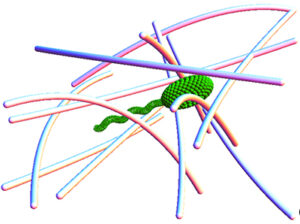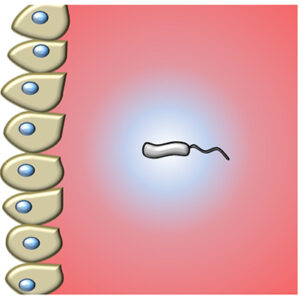Associate Professor Henry Fu received a Faculty Early Career Development (CAREER) award from the National Science Foundation for “Microorganisms swimming around microstructural heterogeneity.” This project began in 2013 while he was an assistant professor at the University of Nevada, Reno.
The five-year project is focused on understanding how microorganisms swim through complex biomaterials. While the swimming of bacteria and sperm through simple fluids like water has been extensively studied, during infection bacteria must navigate tissues and mucus, and during fertilization sperm must swim through mucus in the female reproductive system. “We’re interested in how the complex material properties of these bioenvironments affects swimming. The results could be applied to disease prevention, fertilization, or even designing microrobots that are able to deliver drugs or perform microsurgery inside the human body,” Fu says. “In this project we’re particularly interested in situations where you have to swim through spatially heterogeneous environments.”

The project also funds Fu’s “Move Like a Microbe” outreach demonstration, which uses a haptic (force-feedback) simulator to provide a visceral experience of what it’s like to swim as a microorganism. At the University of Nevada, Reno, this demonstration was used for the public and K-12 students though College of Engineering Summer Camps, and Fu is looking forward to finding opportunities to bring the experience of “moving like a microbe” to audiences in Utah.
